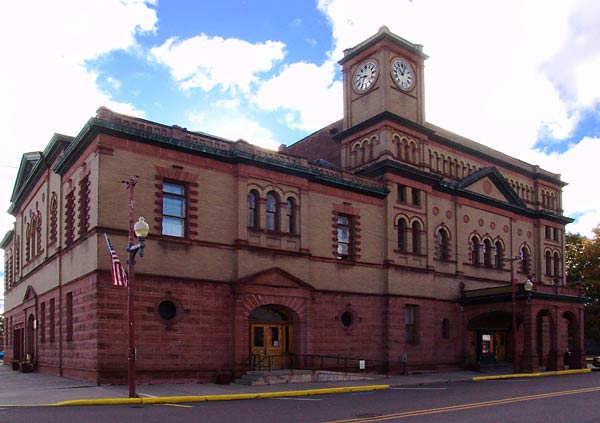
Day 12
Keeweenaw Peninsula

Heading north from McClain State Park our
first stop was the Calumet theatre. The theatre was closed, but a kind
city councilman in the adjoining city office let us into to take a
quick look at the interior. It had been restored beautifully and was a
real treasure. The theatre was constructed in 1900 and was one of the
first municipal theatres in America. Live performances are still held
here.
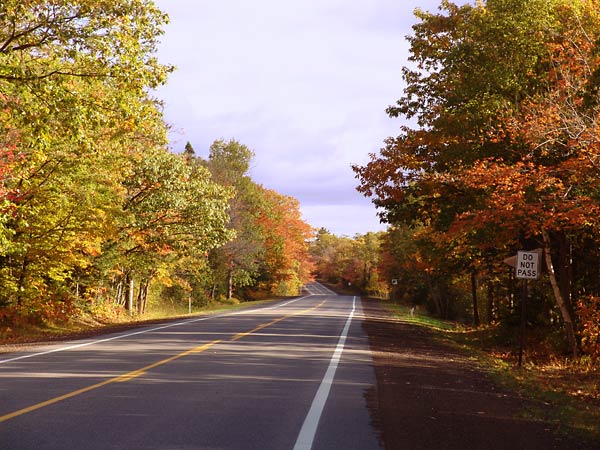
As we went further north, the color in the
trees became more prominent, but it was still not yet at its peak.
Later we were told that the color usually peaks in the first week of
October, so we were about a week too early. But it was still beautiful.
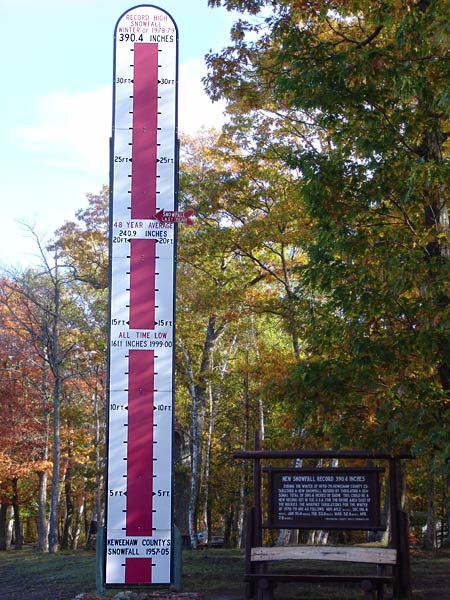
This roadside sign reminded us that this
is deep snow country, due to lake effect snow caused by the proximity
to Lake Superior. The record total winter snowfall is 390 inches and
the average total snowfall is 241 inches. Can you imagine shoveling all
that snow to clear driveways and sidewalks? They must develop special
techniques to deal with it.
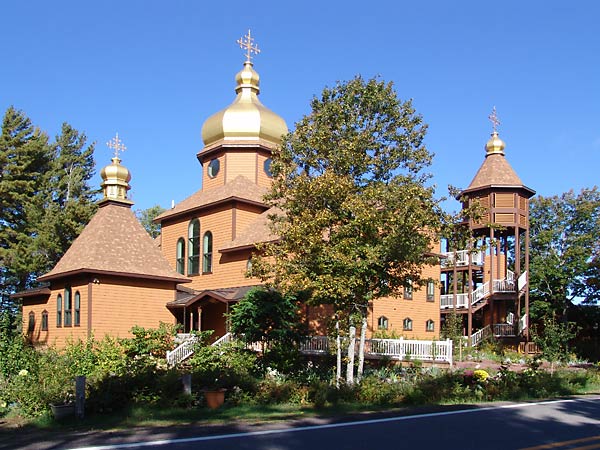
One of the places Dick McGarrity told us
to look for was the Holy Transfiguration Skete, about halfway between
Eagle River and Eagle Harbor. It is a Catholic monastery of the
Byzantine Rite and belongs to the Ukrainian Metropoly. It is not
something I would have expected to see in the U.P. The grounds were
beautiful and the building was very well cared for.
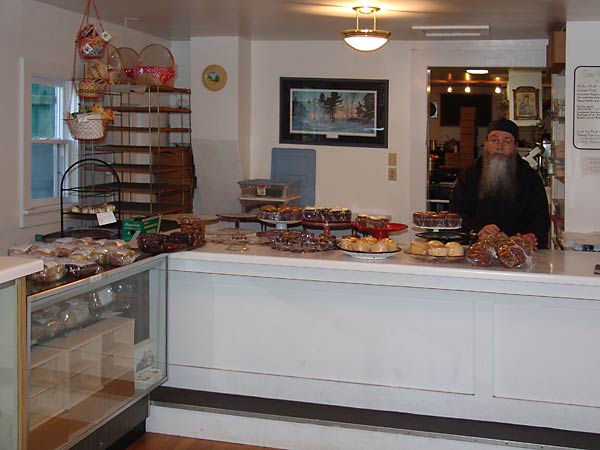
The monks at the monastery run this store,
called the Jampot, where they sell various jams they make, as well as
baked goods. It is their primary economic activity for supporting
themselves.
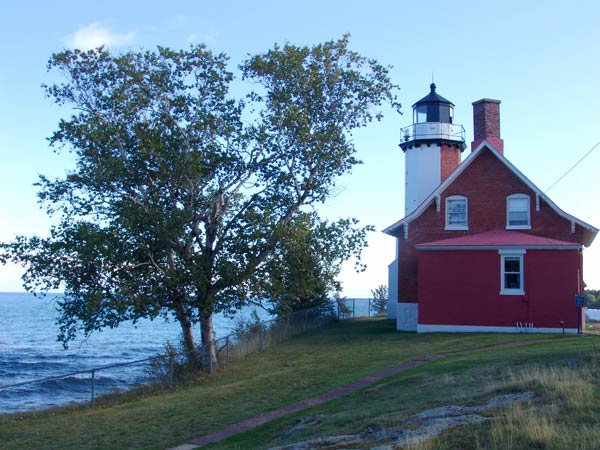
The lighthouse at Eagle Harbor; it is now
a museum.
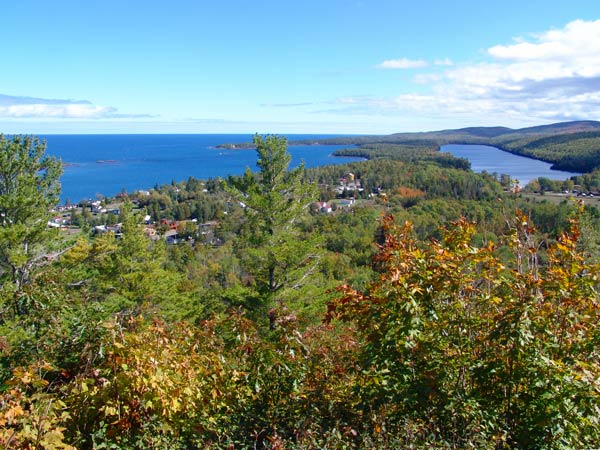
North of Eagle Harbor we took the Brockway
Mountain drive which takes you up to about 700 feet above Lake Superior
and gives an excellent view of the Keeweenaw pensinsula. This view is
of Copper Harbor with Lake Fanny Hooe to the right.
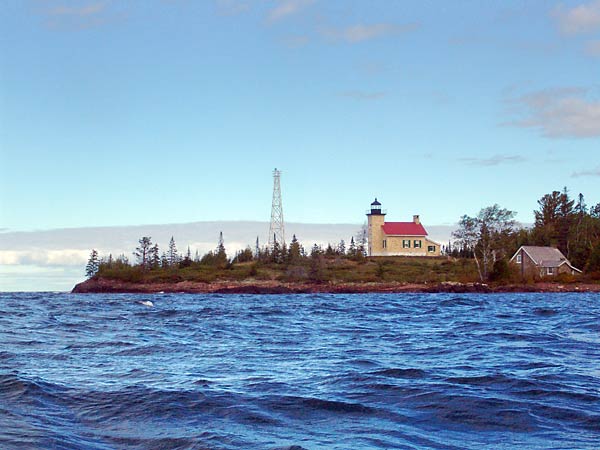
The lighthouse at Copper Harbor. The
original lighthouse was constructed in 1848. It was replaced with this
one in 1866. The steel tower to the left of the lighthouse was built in
1933; it is still operating today.
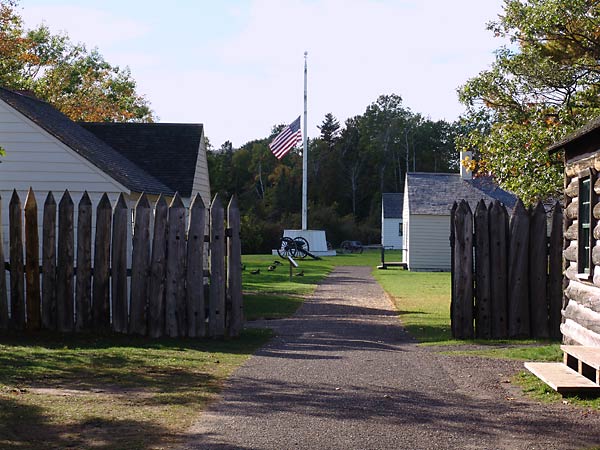
Fort Wilkins State Park just outside
Copper Harbor. It was built in 1844 as an army fort to maintain order
during the copper rush period. It was abandoned in 1846 and reoccupied
in the late 1860s. It has been restored; 12 of the 19 buildings date
from the 1840s. The buildings contain very interesting exhibits showing
life at the army fort in the 1840s and 1860s periods.
Tomorrow, some of the group is heading for the Porcupine Mountains in
the western U.P., but we need to point our Roadtrek south and head
home; we have been gone from home about six weeks. This is
the final segment of this webpage on the Roadtrek rally. It has been a
great rally; we fully enjoyed being on it and have met some very nice
people that we are pleased to call friends.